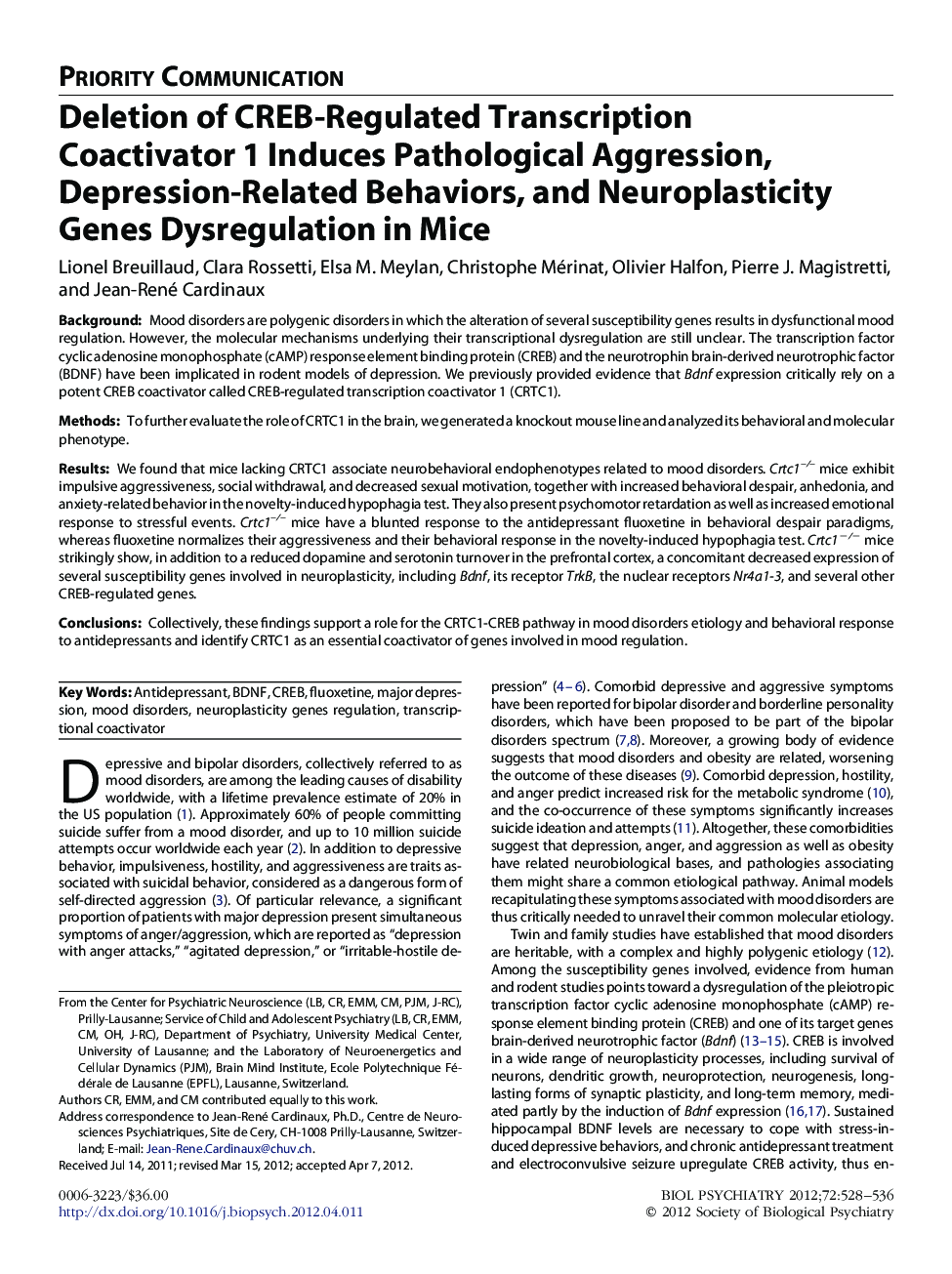| کد مقاله | کد نشریه | سال انتشار | مقاله انگلیسی | نسخه تمام متن |
|---|---|---|---|---|
| 6227522 | 1276457 | 2012 | 9 صفحه PDF | دانلود رایگان |

BackgroundMood disorders are polygenic disorders in which the alteration of several susceptibility genes results in dysfunctional mood regulation. However, the molecular mechanisms underlying their transcriptional dysregulation are still unclear. The transcription factor cyclic adenosine monophosphate (cAMP) response element binding protein (CREB) and the neurotrophin brain-derived neurotrophic factor (BDNF) have been implicated in rodent models of depression. We previously provided evidence that Bdnf expression critically rely on a potent CREB coactivator called CREB-regulated transcription coactivator 1 (CRTC1).MethodsTo further evaluate the role of CRTC1 in the brain, we generated a knockout mouse line and analyzed its behavioral and molecular phenotype.ResultsWe found that mice lacking CRTC1 associate neurobehavioral endophenotypes related to mood disorders. Crtc1-/- mice exhibit impulsive aggressiveness, social withdrawal, and decreased sexual motivation, together with increased behavioral despair, anhedonia, and anxiety-related behavior in the novelty-induced hypophagia test. They also present psychomotor retardation as well as increased emotional response to stressful events. Crtc1-/- mice have a blunted response to the antidepressant fluoxetine in behavioral despair paradigms, whereas fluoxetine normalizes their aggressiveness and their behavioral response in the novelty-induced hypophagia test. Crtc1â/â mice strikingly show, in addition to a reduced dopamine and serotonin turnover in the prefrontal cortex, a concomitant decreased expression of several susceptibility genes involved in neuroplasticity, including Bdnf, its receptor TrkB, the nuclear receptors Nr4a1-3, and several other CREB-regulated genes.ConclusionsCollectively, these findings support a role for the CRTC1-CREB pathway in mood disorders etiology and behavioral response to antidepressants and identify CRTC1 as an essential coactivator of genes involved in mood regulation.
Journal: Biological Psychiatry - Volume 72, Issue 7, 1 October 2012, Pages 528-536